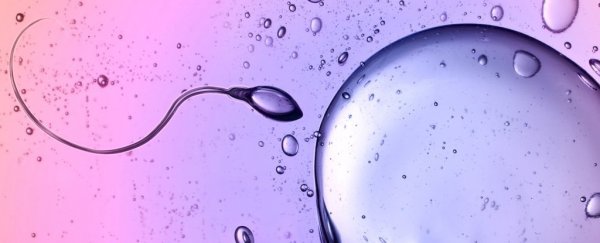When sperm race, it's for keeps. So it comes as little surprise that in some species, the competition over who reaches the egg first can get a little dirty.
A variant in mice genes has been found to give sperm that possess it a clear advantage by poisoning its peers while they're still in development, robbing them of their ability to efficiently sniff their way towards the egg.
In a rather karmic twist, a race consisting only of would-be assassins would be a complete disaster, with researchers finding the genetic variant risks overdosing on its own killer cocktail unless the race is balanced out by its victims.
Geneticists from the Max Planck Institute for Molecular Genetics in Berlin uncovered this rather unique 'cheat code' in mice sperm while investigating the mechanisms male sex cells use to direct their way through the female reproductive system.
"Our data highlight the fact that sperm cells are ruthless competitors," says institute director Bernhard Herrmann.
"Genetic differences can give individual sperm an advantage in the race for life, thus promoting the transmission of particular gene variants to the next generation."
They found a Rho protein switch called RAC1 plays an integral role in keeping sperm on the straight and narrow. Mess this regulator up and sperm will stagger about like it's heading home after closing time on cheap-drinks Tuesday.
But apparently evolution has this all worked out. According to the researchers, a variation in the coding of sequences on chromosome 17 seems to do just this, churning out a product that throws a spanner in the works of RAC1.
This region – called a t-variant – isn't new to science. In fact this stretch of DNA has stood out as an oddity in Mendelian genetics for close to a century.
Mice heterozygous for the trait (having one t-variant chromosome 17, and a partner chromosome with 'normal' coding) don't father the expected 50-50 ratio of offspring you'd expect. The odds of one of their offspring being born without the t-variant, in fact, are one in a hundred.
Yet if they happen to be homozygous for it – with both versions of chromosome 17 containing this aberrant coding – then they can kiss fatherhood goodbye. They're completely sterile.
With all of this in mind, the researchers have teased apart exactly what's going on inside those tiny mice testicles by genotyping individual sperm and assessing their motility patterns.
Early in gamete production, inside sperm precursor cells that contain both the t-variant chromosome and a more normal version, the toxic t-coding interferes with the development of RAC1, effectively disabling it.
Once the precursor cells eventually split into their sperm forms, however, they undergo the process of meiosis, divvying up the chromosomes so each sperm only has one of each pair.
This means some sperm now have a t-variant chromosome, and others don't. Here's the truly clever part – the t-variants also produce their own remedy, rescuing RAC1 from harm by expressing a special regulating protein.
"Imagine a marathon, in which all participants get poisoned drinking water, but some runners also take an antidote," says Herrmann.
That antidote works well in small enough doses. Unfortunately, an abundance of RAC1 is just as bad as a shortfall. In a marathon packed with poisoners all churning out antidotes, the racers will soon be burdened by excess RAC1.
"The competitiveness of individual sperm seems to depend on an optimal level of active RAC1; both reduced or excessive RAC1 activity interferes with effective forward movement," says the study's lead author Alexandra Amaral.
It's the first time experiments have demonstrated exactly how heterozygous t-variant mice gain an advantage, while affirming the biochemistry of RAC1 in mammalian sperm navigation.
Being observed in mice, the research only has limited relevance to human reproduction. But the more we understand about diverse models of reproductive chemistry across the animal kingdom, the better we understand how ours evolved.
This research was published in PLOS One.
